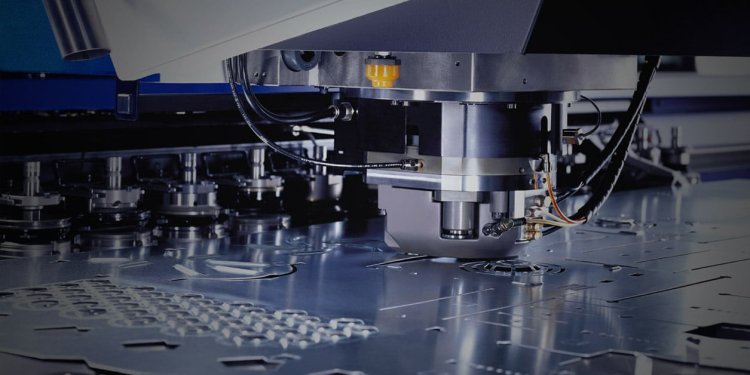The Art of Stainless Steel: Design and Fabrication for Modern Architecture
The art of stainless steel fabrication is a blend of technical expertise and creative vision. From cutting and welding to polishing and custom design, each step in the fabrication process contributes to the final product’s strength, beauty, and functionality. In modern architecture, stainless steel continues to be a material of choice, offering endless possibilities for innovative and stunning designs.
Share this Post to earn Money ( Upto ₹100 per 1000 Views )

Stainless steel is not just a material; it’s a versatile marvel that combines durability, aesthetics, and functionality. In the world of modern architecture, stainless steel plays a crucial role in shaping striking structures and elegant designs. Whether it's a sleek skyscraper, a contemporary bridge, or an artistic sculpture, stainless steel’s unique properties make it an ideal choice. This blog post will delve into the art and science of stainless steel fabrication, exploring how design and fabrication techniques come together to create architectural masterpieces.
The Fabrication Process: Turning Ideas into Reality
1. Stainless Steel Cutting: The First Step
The journey begins with stainless steel cutting. This is where raw stainless steel fabrication sheets or pipes are precisely cut to size and shape based on design specifications. There are several methods for cutting stainless steel:
-
Laser Cutting: Offers precision and flexibility for complex designs.
-
Water Jet Cutting: Uses high-pressure water mixed with abrasive materials, suitable for thick materials.
-
Plasma Cutting: Provides speed and efficiency, ideal for thinner sheets.
Each method has its advantages depending on the thickness and complexity of the material. The choice of cutting technique significantly impacts the final appearance and integrity of the fabricated component.
2. Stainless Steel Welding: Joining the Pieces
Once cut, the next step is to join the stainless steel components. Stainless steel welding is crucial in ensuring the strength and durability of the final product. Common welding techniques include:
-
TIG (Tungsten Inert Gas) Welding: Provides high-quality, precise welds ideal for thin materials.
-
MIG (Metal Inert Gas) Welding: Faster and suitable for thicker materials, commonly used in larger projects.
-
Spot Welding: Used for joining overlapping sheets quickly.
Proper welding techniques are essential to avoid issues like weak joints or corrosion, ensuring that the final structure is both beautiful and resilient.
3. Stainless Steel Polishing: Achieving the Perfect Finish
After welding, stainless steel components often require polishing to achieve a smooth and reflective surface. Polishing removes imperfections and enhances the material’s aesthetic appeal. Various methods include:
-
Mechanical Polishing: Uses abrasive materials to smooth out the surface.
-
Electropolishing: An electrochemical process that removes surface impurities and improves corrosion resistance.
A well-polished stainless steel surface can significantly elevate the overall look of an architectural project, giving it a sleek, modern finish.
Custom Stainless Steel: Tailoring to Unique Designs
One of the standout features of stainless steel is its adaptability to custom designs. Whether it’s an intricate façade or a uniquely shaped sculpture, custom stainless steel components can be fabricated to meet specific design requirements. This involves:
-
Design Consultation: Working closely with architects and designers to understand their vision.
-
Prototyping: Creating samples to test design concepts and material properties.
-
Fabrication: Using advanced techniques to produce custom components that match the design specifications.
Custom stainless steel offers unparalleled flexibility, allowing for creativity and innovation in architectural design.
Applications in Modern Architecture
Stainless steel is used in a variety of architectural applications, each highlighting its unique properties. Some common applications include:
1. Stainless Steel Structures
From skyscrapers to bridges, stainless steel is often used for structural components due to its strength and durability. It can withstand harsh weather conditions and provides a sleek, modern look that complements contemporary designs.
2. Stainless Steel Tubing and Pipes
Stainless steel tubing and pipes are frequently used in both structural and decorative applications. They offer strength and flexibility, making them ideal for railings, supports, and frameworks.
3. Stainless Steel Fittings
Fittings such as connectors, joints, and brackets are essential for assembling and securing stainless steel components. They ensure that various parts work together seamlessly, contributing to the stability and functionality of the structure.
4. Stainless Steel Sheets
Used for both functional and decorative purposes, stainless steel fabrication sheets are versatile and can be used in façades, interior panels, and more. They are available in various finishes, from matte to mirror-like, allowing for a wide range of design options.
The Benefits of Stainless Steel in Architecture
Stainless steel offers several advantages that make it a preferred choice for modern architecture:
-
Durability: Resistant to corrosion and staining, ensuring longevity and low maintenance.
-
Aesthetic Appeal: Provides a sleek, modern look that enhances the visual appeal of any design.
-
Strength: Capable of supporting significant loads, making it suitable for structural applications.
-
Sustainability: Recyclable and often made from recycled materials, contributing to eco-friendly construction practices.
Challenges and Considerations
Despite its many benefits, stainless steel fabrication does come with challenges. These include:
-
Cost: Stainless steel can be more expensive than other materials, which may affect budget considerations.
-
Machining Difficulty: The hardness of stainless steel can make cutting and welding more complex, requiring specialized equipment and techniques.
-
Design Limitations: While flexible, certain intricate designs may require advanced fabrication techniques to achieve.
Conclusion:
The art of stainless steel fabrication is a blend of technical expertise and creative vision. From cutting and welding to polishing and custom design, each step in the fabrication process contributes to the final product’s strength, beauty, and functionality. In modern architecture, stainless steel continues to be a material of choice, offering endless possibilities for innovative and stunning designs.







